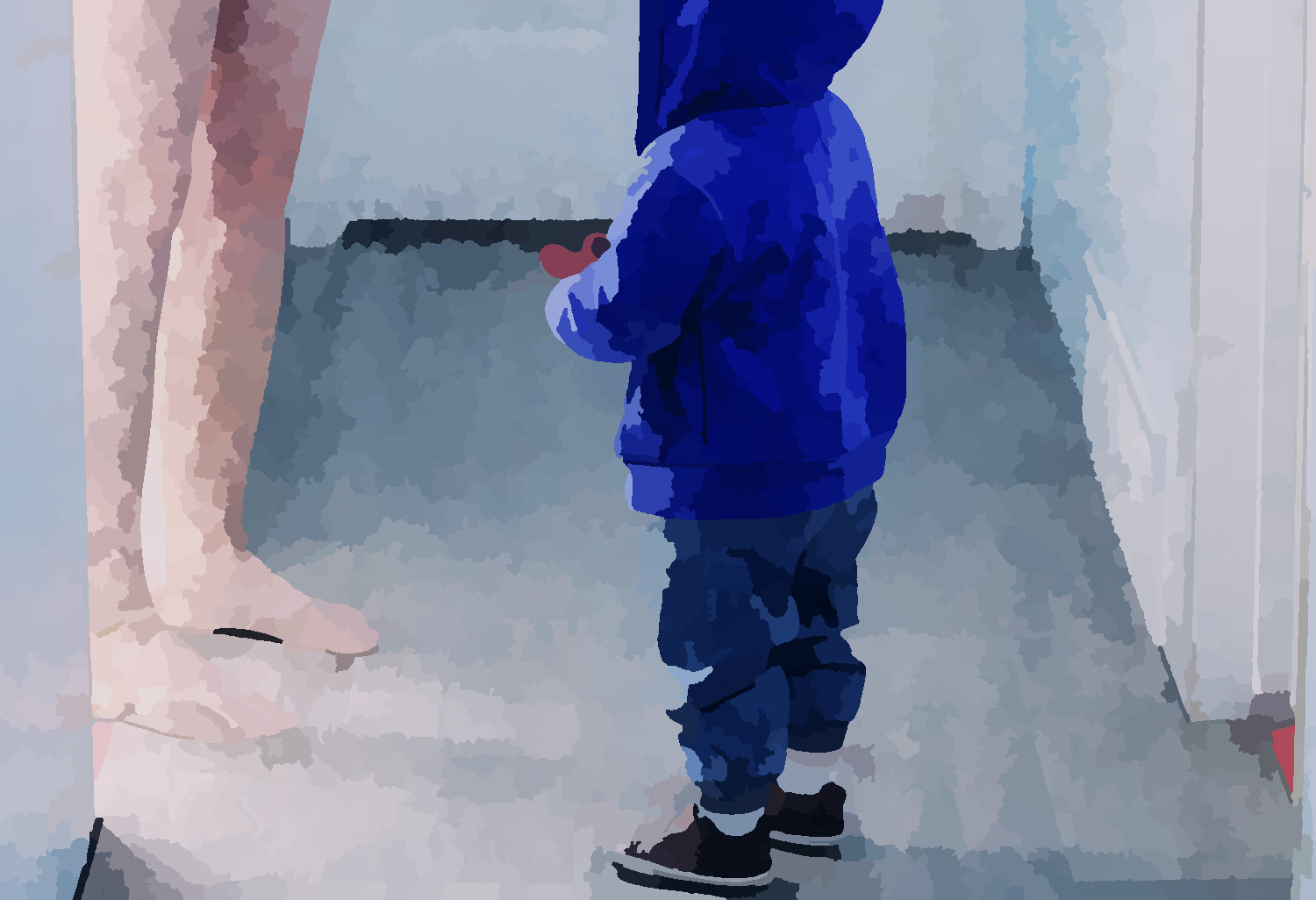You’re here because you want to learn about the signs of attachment issues in adults. The first thing to know is that attachment issues are actually pretty common in adults.
Sadly, many people are completely unaware that these attachment issues are likely the cause of all the suffering, pain and confusion inside of every close relationship they have.
That’s a big statement, we know. But unfortunately it’s more true than most of us realize.
Attachment problems show up in many forms, but in terms of attachment disorders, these are usually diagnosed in children and there are two main types. They are known as reactive attachment disorder (RAD) as well as Disinhibited Social Engagement Disorder (DSED).
As an adult, you would not usually receive a diagnosis of these two types of attachment disorder – even if you had these disorders as a child, and the behavior persisted into your adulthood.
Instead if you have attachment issues, you would most likely be diagnosed with an insecure attachment style, which we will discuss shortly.
Reactive Attachment Disorder & Disinhibited Social Engagement Disorder
So what is reactive attachment disorder and what is disinhibited social engagement disorder?
Reactive attachment disorder occurs when a child is unable to form a healthy, mutually responsive relationship with his or her parent or primary caregiver.
People with RAD have had their early interactions so damaged that their future relationships are likewise harmed. As a consequence of early emotional neglect, these people will likely have trouble relating to others and frequently also have developmental delays as a child.
Children with disinhibited social engagement disorder are impulsive, emotionally detached and socially disinhibited. They (unlike most healthy children) do not have a preference for a caregiver, and seek affection indiscriminately – even from strangers.
Children who didn’t have a proper carer in their first few years, and children who were abused or shipped to several different carers throughout their childhood will most likely have this disorder.
In the next section, I will walk you through:
- What secure attachment is
- The types of insecure attachment styles that lead to signs of attachment issues in adults
- The clear-cut signs that indicate attachment issues; and
- How you can address these concerns.
“Love is an attachment to another self. Humor is a form of self-detachment – a way of looking at one’s existence, one’s misfortune, or one’s discomfort. If you really love, if you really know how to laugh, the result is the same: you forget yourself.” – Claude Roy

Secure Attachment
Secure attachment style people have an easier time in partnerships. They are more confident in their own abilities because they were given adequate attention, affection, and tenderness as a child.
This type of attachment style is more likely to be confident in themselves and their relationships; they aren’t afraid of intimacy and have the ability to both be self-sufficient and interdependent. Emotionally available, grounded, and non-reactive are some of the characteristics of people who are secure in their attachments.
There are times when even those with safe attachment styles are affected by their emotions. Ruptures occur infrequently and are usually resolved quickly when there are two people in a committed relationship.
Even when one person is attached to a spouse who is not, there are bound to be problems. Keeping your “safe attachment base” in place is the most important thing you can do if you’re in a relationship with an insecurely attached person.
Would you like to learn to have the ability to “trade in” your anxiety and insecurities for self esteem, self worth and intrinsic confidence, so that no one will ever take you for granted & high value men will recognise you as an indispensable “keeper”? CLICK here to learn how to have a high value mindset.
Signs of Attachment Issues in Adults & Insecure Attachment Styles
Attachment issues arise from something widely known as insecure attachment. Insecure attachment is basically a way of relating to caregivers which children develop to get their needs met in a neglectful, unpredictable or abusive environment.
Insecure attachment is often compared to secure attachment which is the healthy attachment style that children (and adults) develop if they have had reliable, caring and emotionally responsive parents.
In the case of attachment issues in adults, it is the insecure attachment styles that are relevant and will show us exactly how these issues manifest.
Generally, there are three categories of insecure attachment that lead to adult attachment issues. There are anxious/ambivalent, apprehensive/avoidant, and disorganised.
Let’s look at all three of these types of insecure attachment and their corresponding signs of attachment issues in adults.
Anxious/Ambivalent
The anxious/ambivalent adult is likely to feel overworked and undervalued, due to spending excessive energy on worry and anxiety.
Anxious attachment is the effect of a caregiver who was “hot and cold,” frequently swinging from warm affection to frigid rejection without warning. This caregiver could have been emotionally fragile, only showing love when it benefited him or her.
As a result, the anxious/ambivalent adult is wary of relationships, but they nonetheless center their lives around them.
He or she obsessively examines the actions of others, rehearsing the same events over and again.
Furthermore, someone who is apprehensive or ambivalent must maintain control in all situations, because they are so liable to feeling out of control all the time. Such is the effect of constant underlying anxiety.
“None are so empty as those who are full of themselves.” – Benjamin Whichcote
They’re also prone to idealizing individuals and are sensitive to rejection. In a relationship, the person will be preoccupied with and reliant on their significant other yet will find them difficult to comprehend.
Excessive emotions, jealousy, and possessiveness are all prevalent characteristics of the anxious preoccupied adult.
Recommended: How To Overcome Anxious Preoccupied Attachment: 7 Proven Steps.
Here are the signs that an adult has issues with anxious attachment:
Sign # 1: Tendency to Idealize Others
Many people with attachment issues will undermine themselves and idealize others due to inherent low self worth.
This is one of the obvious signs of attachment issues in adults purely because it shows the obvious trait of someone whose emotional needs were neglected in childhood: low self esteem.
Someone with low self esteem naturally diminishes themselves and looks to others as the example of perfection, because somewhere deep down inside, they know that they are not quite as normal or healthy as others who may display all the positive traits of secure attachment.
People with this tendency to idealize others would often want to mimic their lifestyle or habits, which will often be habits that do not complement their own.
Sign # 2: Jealousy
Anxiously attached people are very emotional and prone to jealousy, because they have a tendency to see a lot of their partner’s innocent behavior as a threat to their emotional safety in the relationship.
They will feel jealous if their partner spends too long talking to a member of the opposite sex, for example, because they are always on alert and worried that they will be abandoned at any moment.
Since such individuals have not seen healthy relationships, witnessing the good family conduct of their peers could also ignite jealousy which will also affect their relationships.
Sign # 3: Difficulty Developing or Maintaining Healthy or Long-Term Relationships
Due to trust issues caused by a dysfunctional household and selfish caregivers, such individuals have no internal model of what a healthy relationship looks like.
Hence, they cannot digest alternative approaches to relationships and tend to think of the worst.
Due to constant anxiety, they do not live in the present, which can cause recurring issues with their partner.
Sign # 4: Overdependence on Relationships
Due to the lack of real emotional nurturing growing up, these people may always be craving for love from outsiders, and they can get carried away very easily, give up their standards, and become over-dependent on abusive or inappropriate partners for a long time.
Sign # 5: Possessiveness
What would you do if you were always on edge, always secretly feeling unworthy and worried about losing your partner?
You’d become overly possessive of those you love.
Being profusely ignored during childhood makes an individual too wary of everything they become attached to or all people they are involved with.
Would you like to learn how to use your innate feminine bias for early attachment to create deeper attraction with men and inspire a deeper commitment from him without you looking needy and low value? CLICK here to learn about high value attachment.
Sign # 6: Feeling Unlovable or Undesired by Others
As we mentioned, adults with anxious attachment lack self-worth, self-confidence and never see the best in themselves. They tend to hold onto the delusion that they will never ever be loved, never be truly cared for, and never be actually desired by friends, family, or romantic partners.
MORE: How To Self Soothe Anxious Attachment In 5 Simple Steps.
Avoidant
The avoidant adult has honed their ability to avoid intimacy and essentially isolate themselves from other people. When major caregivers were absent or neglectful and dismissive of your emotional needs when you were a child, you may have developed this behavior pattern.
He or she was unable to rely on grownups to supply his or her basic needs, therefore he or she learned to hide these needs in order to ironically, keep their parents or caregivers close by.
Yes you read that right.
The avoidant has become avoidant in order to ‘keep’ as much of their parents emotional resources as is humanly possible.
Since their parents dismissed and/or ignored their needs, they had to dim their needs in order to keep what little attention there was left in the bucket still flowing from their parent.
They know that if they show their needs, they will have to feel the pain of emotional and possibly physical abandonment, so they don’t show the extent of their needs – just to survive.
Internalized hopelessness about relying on anybody causes them to avoid expressing their needs or asking for help, and they may also feel scorn for others who do so.
“Some people destroy their relationship just because they are not willing put aside their ego.” – Anonymous
In most cases, the avoidant has a pessimistic opinion of other people because they are afraid of getting too close to them in a relationship. It is common for him or her to perceive others as incompetent and insecure while he or she deems themselves to be superior.
With avoidants, there will be a reluctance to enter into close relationships due to the perceived danger to their sense of control.
Here are the signs that an adult has issues with avoidant attachment:
Sign # 7: Compulsive self-reliance
What would you do if you knew for sure that you could not rely on the people closest to you to be responsive to your cries or even just basic emotional needs?
You’d have no choice but to rely on yourself. Self-sufficiency is a priority for these people.
The act of “turning off” one’s attachment sentiments has a defensive component; emotional closeness is avoided in order to keep one’s underlying attachment demands hidden and to avoid feeling vulnerable.
MORE: How To Be Vulnerable With A Man Without Being NEEDY.
Sign # 8: Preference For Working Alone Or Just Being Alone
This is one of the signs of attachment issues in adults that should come as no surprise. The avoidant adult typically finds more comfort in being alone, because close relationships and relying on other people causes them great stress.
Sign # 9: Tendency To Be Overly Critical Of Others
Avoidant adults tend to judge every little detail about others, pick out faults purely based on external aspects and use criticism as a form of control.
This serves the purpose of – you guessed it – keeping people far, far away from them.
Sign # 10: Oversensitivity To Blame
Adults with avoidant attachment simply cannot take blame. Along with getting overly defensive, they make the feelings of guilt far away in order to not feel at fault.
Sign # 11: Self-criticism
They constantly feel worthless and tend to internalize negative thoughts about themselves. They judge themselves and emotionally punish themselves, even as they are doing the same to everyone else.
Why?
Because they expect to be rejected by others anyway, so you can consider this to be like an act of pre-emptively pushing people away.
Related: Why Do I Push People Away? & 7 Signs You Push People Away.
Sign # 12: Lack of Belief in the Concept of a Romantic Relationship
It’s not uncommon for adults with an avoidant attachment style to say “I don’t believe in love!”
Their internal paradigm for warmth, love and closeness has been shattered, and they feel all relationships are for a selfish purpose.
Hence, they refrain from getting in a committed relationship, and even if they do, they cannot give their 100% to the same. Instead, avoidants may be themselves very selfish inside of a relationship, treating the relationship as a place they go to make transactions rather than give and receive love.
Sign # 13: Avoidance of Intimacy
They develop a reluctance to get emotionally or physically close to anyone. It ultimately affects their ability to establish and maintain long-term close relationships. Sometimes, they might even unconsciously create altercations, which make it difficult for the other person to stay with them.
Disorganized
The final insecure attachment style is the disorganized attachment. Disorganized attachment occurs when a caregiver was abusive or violent and unpredictable.
MORE: Disorganized Attachment Style: Beware The 8 Signs You Have It & What To Do.
A child is supposed to be loved and provided for adequately and the warmth of their parents able to be depended upon.
The relationship between the caregivers and the child must be filled with love in order for them to be adequately provided for.
But when it turns into a relationship defined by fear, the child starts to develop intense fear and negative emotions towards closeness or towards getting attached to anyone.
When such children grow up, they commonly suffer from depression or retort to substance abuse. They find it difficult to connect with others and often find reasons to stay away from getting too attached.
The worst part of suffering from disorganized attachment is that it has inherent anxiety and avoidant issues. And so, it is also difficult to treat because such grown-ups often get into a relationship with a preconceived notion that it would eventually result in rejection and hurt.
You may be wondering how this style is different from the avoidant attachment style.
Well, disorganized attachment is essentially a combination of the avoidant and anxious attachment styles.
In a nutshell, the disorganized adult wants intimacy, but is intensely fearful of it, leading them to act in erratic and unpredictable ways.
MORE: Dating & Disorganized Attachment: 5 Signs Of It & FAQ.
Signs of Disorganized Attachment
#14: Filled With Negativity
People with disorganized attachment issues develop a negative perception of everyone, thanks to the negative early experiences they had. What’s worse is that they even include themselves while doing this.
Such a level of negativity sometimes leads them to substance abuse or results in mental disorders.
#15: They Don’t Believe in The Success of The Relationship
Since such people do not perceive attachment as positive (on account of childhood abuse and emotional neglect), they don’t believe their relationship would ever be successful with anyone.
They unconsciously or consciously predict that every relationship will end up in rejection. They fear that such an outcome is inevitable, so they adopt behaviors that sabotage any possibility of endless love.

#16: Trust Issues
People with disorganized attachment issues would find it hard to trust anyone, because they’ve been betrayed from an early age, and because their normal, biological attachment needs were not given the respect they deserved.
Whether it’s an emotional connection or physical intimacy, they find it difficult to create any lasting connection built on mutual trust.
How Do Attachment Disorders Develop?
For more than 70 years, psychologists have known that the potential to build emotional bonds begins in childhood.
A child’s healthy relationship with their caregiver builds the groundwork for healthy attachments throughout a person’s life.
“You are more likely to create excellent attachments if you come from an environment with good attachments,” says psychotherapist Toby Ingham.
“People who have had terrible events in their youth generally have difficulty with attachments,” he further explains.
Because they have a hard time building attachment, these people have a hard time maintaining close relationships and may struggle with commitment.
Even if they appear committed on the surface (ie: they are legally married), behind closed doors, they tend to avoid real intimacy and aren’t very devoted nor loyal partners.
Reactive Attachment Disorder & Carried-Forward Toxicity
Despite its reputation as a childhood condition, reactive attachment disorder (RAD) can have far-reaching consequences in adulthood.
Our formative experiences, particularly our childhood relationships, are thought to be the root of attachment disorders, but there can be other causes as well.
For example:
- A poor relationship breakup
- Being abandoned unexpectedly
- Being cheated on as an adult, or
- A traumatic experience such as being in an accident or being attacked
All of these experiences might cause us to lose faith in the bonds we form and to thereby develop reactive attachment disorder.
However, most attachment disorders come from neglect early in our lives.
It should be noted that even though some children may be brought up with plenty of food, access to clean water, a stellar education and even considered to be financially privileged can have reactive attachment disorder.
This is because at the root of the issues, reactive attachment disorder comes from the worst kind of neglect: emotional neglect.
If the signs and symptoms of RAD are not treated in infancy, the negative behaviors associated with RAD will definitely persist into adulthood.

Attachment Issues Can Lead To Other Serious Problems
Attachment difficulties in adults can cause more than just relational problems. Attachment disorders have been related in several studies to other medical, mental, and social issues.
Let’s have a look at these, because these can also be signs of attachment issues in adults.
Alexithymia:
Patients with this subclinical personality feature lack emotional awareness. Patients with this condition have a hard time identifying, expressing, or simply experiencing emotions. They may appear cold and aloof, which makes it more difficult for them to build and sustain relationships. Insecure attachment is thought to be a crucial etiologic component in alexithymia development.
Depression and anxiety:
Attachment disorder patients have a tendency to internalize emotions, making them vulnerable to acquiring additional psychiatric issues.
Unresolved attachment issues were discovered to have a substantial association with depression, according to researchers who conducted a meta-analysis.
In another study, researchers discovered that insecure connection, specifically attachment anxiety, contributes to emotional dysregulation and an increase in anxiety symptoms.
Addiction:
Addiction is more likely to develop in patients with attachment difficulties.
“Addiction usually goes hand in hand with attachment breakdown,” Dr. Ingham explains, adding that addiction could be one of the self-isolating responses to dysfunctional connection.
According to the authors of one study, people with attachment difficulties and alexithymia have higher incidences of alcohol use as an emotional coping method.
Eating disorders: Insecure attachment has been linked to a variety of eating disorders, including anorexia, bulimia, and binge eating disorder. This is connected to internal shame, self hatred and self-blame.
How to Heal Attachment Issues In Adults?
For anyone suffering from attachment issues, or if you have noticed the signs of attachment issues in adults in a loved one, here are some things you can do to heal it for yourself or others:
Step #1: Identity Which Attachment Style You Have
First things first: work out which attachment style you have. Here’s an article that will help you identify your personal attachment style.
When you identify your attachment style, the next step is:
Step #2: Respect What Your Attachment Style Did For You
I know that it’s so easy to feel defeated and let down when you identify that you have an insecure attachment style, but the truth is that your attachment style is an adaptation that was designed to help you.
That’s right, it was designed to help you.
For example, even if you have an avoidant attachment style, know that it was created as a way for you to actually keep your caretakers or parents as close as was humanly possible, given that they were already distant and avoidant of your needs.
It seems crazy, but avoidant children are the way they are so that they can actually maintain proximity to a parent for their own survival.
An avoidant child shuts off their attachment needs – or at least it appears that way – so that they couldn’t be condemned, punished, shamed, hurt or rejected all over again by their parent.
Acknowledge that you or your loved one have developed this attachment style to get your needs met in the best way possible, given the circumstances.
And the same goes for anxiously attached people – they have developed a constant underlying worry – a vigilance and an obsession with those they love, so that they could ensure that their needs were more likely to be met.
Once you acknowledge the positive in your attachment style, you can clearly see how to accomplish step 3, which is:
Step #3: Lean Into Intimacy
That’s right, lean into intimacy. If you have reactive attachment disorder, then essentially you have dysfunctional ways of experiencing intimacy – or you don’t experience it at all.
So you need to make yourself be intimate, first of all with yourself by feeling deeper into your emotions (you know, the ones you try not to feel), and by being present with other people’s emotions.
Step #4: Process Through Your Relationship With Your Parents & Caregivers
You may need a therapist for this, but you don’t have to have a therapist for it. You can simply solicit the help of a trusted friend or loved one – or even make a conscious effort to journal – daily.
This is a commitment that you need to make to yourself, and stick with it daily – because let’s face it, this is the hardest part that most people avoid to the death.
It’s very hard to process through the reality of having been neglected by our parents, because it brings up feelings of not being worthy and not being loved.
But this process is also the exact thing you need in order to be at peace with what happened to you.
Without processing and grieving what you didn’t have with your parents, you will always keep people at arm’s length and/or have difficulty with intimacy.
You need to re-live the pain and trauma of neglect, so that your emotions can have the opportunity to adjust and eventually, develop a newfound, secure attachment.
People with insecure attachment are usually lagging behind in emotional development, and that’s due to their needs and emotions having not been nurtured.
So you need to play catch up as an adult by processing and feeling through everything. This will allow you to become more balanced and well adjusted in your adult relationships and romantic life.
Parting Words
Healing from attachment issues is never a walk in the park, but that’s also why the effort is worth it – because on the other side, you have the freedom to enjoy real, vulnerable connection and a renewed sense of safety and belonging.
Know that no matter what happened to you in your past, you are worthy and nothing can ever change that.

